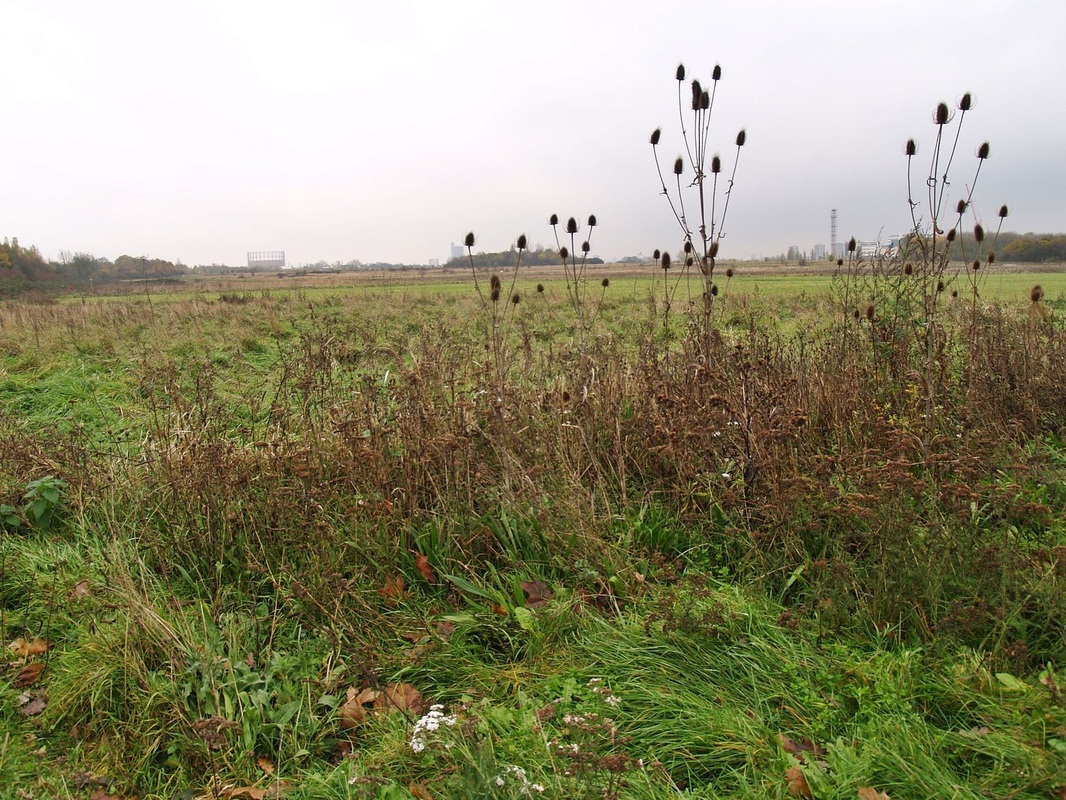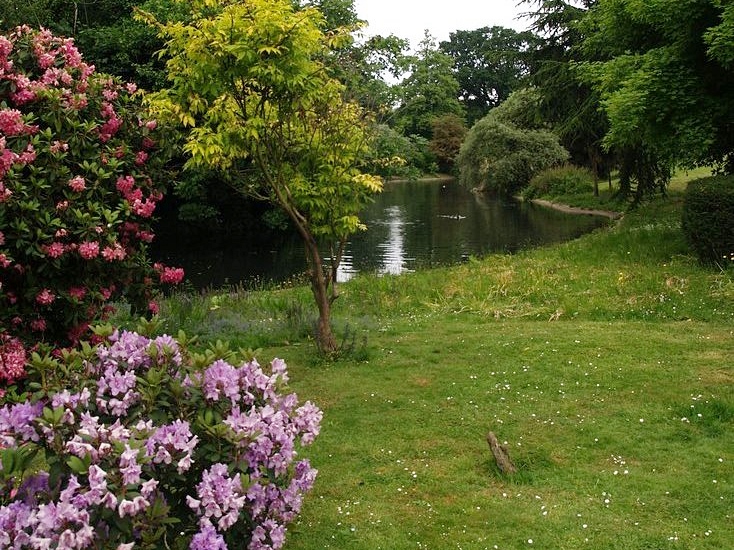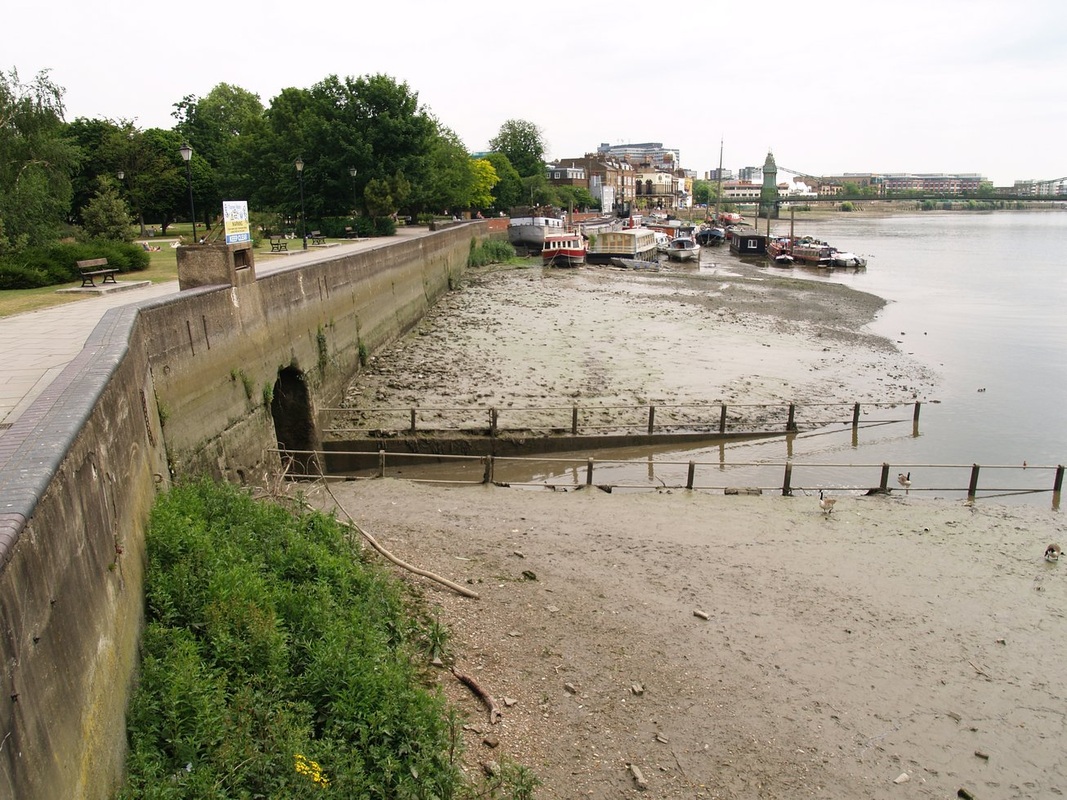London's Lost Rivers - Stamford Brook
Formed of three streams from Acton and Wormwood Scrubs coming together in the Ravenscourt Park area and then crosses King Street in Hammersmith before discharging into the Thames at Furnivall Gardens. A tributary or ditch also ran along the boundary line between the parishes of Chiswick & Hammersmith from Stamford Brook Rd to the Thames at Chiswick Eyot and some sources say there was another from near Ravenscourt Park to join up with Parrs Ditch further east.
The easternmost of these three streams arising to the west of Wormwood Scrubs was shared with the spring feeding Acton Wells which in the early 18th century was one of the most frequented and fashionable medicinal wells. The water possessed mild laxative powers and could also be purchased at Ludgate and Fleet St in casks. However by the late 19th century the stream in that vicinity was described as a “disgraceful open sewer”. The middle stream was known as the Warple and the western branch, the Mill Hill Stream/Brook. Some people have referred to the western stream of Stamford Brook as Bollo Brook. In this part of London there were a number of watercourses, both natural and artificial, which have totally disappeared and this has led to a lot of confusion. Upon investigation at the local archives a document published by the Journal of the London Society in 1970 states that Bollo Brook was a separate stream and the western stream of Stamford Brook was in fact the nearby Mill Hill Brook which rose just south of Acton High Street.
The name Stamford comes from an ancient ‘stoney ford’ which crossed the brook at King Street in Hammersmith where the town hall now stands. This is not to be confused with Stamford Bridge which crossed Counters Creek on the borders of Fulham and Chelsea. Stamford Brook now gives its name to both a district and an Underground station. The area is known for its breweries and laundries who made good use of the streams in early times.
The Stamford Brook became a wider watercourse from King St to the present-day site of to Furnivall Gardens & was called Hammersmith Creek. Until the early 19th century the creek was navigable over this distance, and the surrounding area was known as Little Wapping which was the scene of much industry with lead mills, malt houses and boat builders along the banks of the Creek. Barges used to sail up The Creek to unload at Cromwell Brewery where the town hall now stands. William Morris the textile designer, writer and socialist lived in a house alongside the Creek. A pub called The Dove in an alleyway also beside the creek still remains and this 17th century building is steeped in history – “Rule Britannia' was said to have been written in an upstairs room.
The stream was covered by 1900 and is now a sewer. There are no sections of the Stamford Brook overground these days, although the ornamental waters in Ravenscourt Park were once fed by the brook when these waters formed a moat which surrounded the medieval manor house of Palingswick on this site. The manor house was destroyed by bombing during World War Two
The Creek was filled in during 1936 and after a flying bomb devastated the last remnants of Little Wapping in 1944, Furnivall Gardens was created on the site in 1951 for the Festival of Britain. Today the outfall can be seen at the Thames underneath Furnivall Gardens.
Plans were proposed by a group of architects in 2008 to bring Stamford Brook to the surface at Hammersmith which would have involved sinking a main dual carriageway road (the A4) underground as part of a series of schemes to reconnect Hammersmith with the Thames.
The easternmost of these three streams arising to the west of Wormwood Scrubs was shared with the spring feeding Acton Wells which in the early 18th century was one of the most frequented and fashionable medicinal wells. The water possessed mild laxative powers and could also be purchased at Ludgate and Fleet St in casks. However by the late 19th century the stream in that vicinity was described as a “disgraceful open sewer”. The middle stream was known as the Warple and the western branch, the Mill Hill Stream/Brook. Some people have referred to the western stream of Stamford Brook as Bollo Brook. In this part of London there were a number of watercourses, both natural and artificial, which have totally disappeared and this has led to a lot of confusion. Upon investigation at the local archives a document published by the Journal of the London Society in 1970 states that Bollo Brook was a separate stream and the western stream of Stamford Brook was in fact the nearby Mill Hill Brook which rose just south of Acton High Street.
The name Stamford comes from an ancient ‘stoney ford’ which crossed the brook at King Street in Hammersmith where the town hall now stands. This is not to be confused with Stamford Bridge which crossed Counters Creek on the borders of Fulham and Chelsea. Stamford Brook now gives its name to both a district and an Underground station. The area is known for its breweries and laundries who made good use of the streams in early times.
The Stamford Brook became a wider watercourse from King St to the present-day site of to Furnivall Gardens & was called Hammersmith Creek. Until the early 19th century the creek was navigable over this distance, and the surrounding area was known as Little Wapping which was the scene of much industry with lead mills, malt houses and boat builders along the banks of the Creek. Barges used to sail up The Creek to unload at Cromwell Brewery where the town hall now stands. William Morris the textile designer, writer and socialist lived in a house alongside the Creek. A pub called The Dove in an alleyway also beside the creek still remains and this 17th century building is steeped in history – “Rule Britannia' was said to have been written in an upstairs room.
The stream was covered by 1900 and is now a sewer. There are no sections of the Stamford Brook overground these days, although the ornamental waters in Ravenscourt Park were once fed by the brook when these waters formed a moat which surrounded the medieval manor house of Palingswick on this site. The manor house was destroyed by bombing during World War Two
The Creek was filled in during 1936 and after a flying bomb devastated the last remnants of Little Wapping in 1944, Furnivall Gardens was created on the site in 1951 for the Festival of Britain. Today the outfall can be seen at the Thames underneath Furnivall Gardens.
Plans were proposed by a group of architects in 2008 to bring Stamford Brook to the surface at Hammersmith which would have involved sinking a main dual carriageway road (the A4) underground as part of a series of schemes to reconnect Hammersmith with the Thames.





